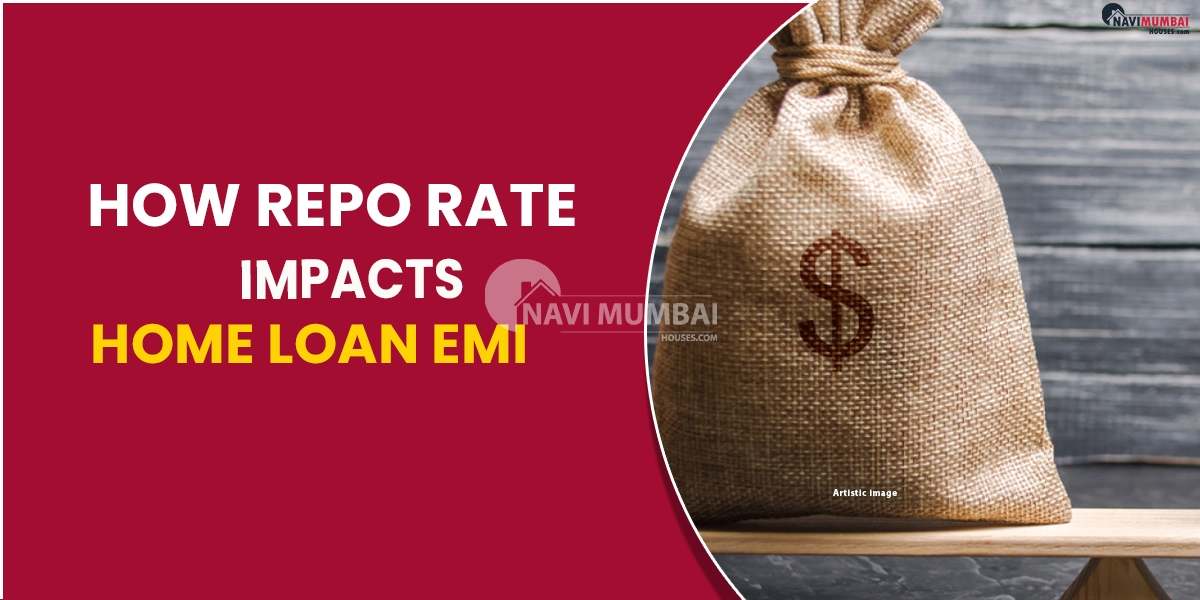
- August 11, 2023
- News
How Repo Rate Impacts Home Loan EMI
Current Updates Repo Rate Impacts Home Loan
August 2023
Repo rate impacts home loan the key repo rate will remain at 6.50 percent, As decided by the Reserve Bank of India’s Monetary Policy Committee (MPC), According to Governor Shaktikanta Das. This is the third time in a row that the rates have remained the same. Governor Das voiced concern about the significant increase in inflation seen in recent months despite this choice. The central bank has decided to take a cautious and watchful attitude as a result. Notably, This respite in rate increases is accompanied by a readiness to intervene if necessary.
RBI Governor Shaktikanta Das emphasised the unanimous decision and India’s robust economy, Which is expect to overtake the United States as the fifth-largest in the world and is well-position to deal with changes in the global economy.
Das expressed confidence in India’s ability to maintain its economic growth despite difficulties like inflation and external concerns. There won’t be any immediate changes to loan-equivalent monthly installments (EMIs) as long as the repo rate is constant.
Are you looking for flats in Vartak Nagar ?
June 2023
Following the conclusion of its three-day Monetary Policy Committee (MPC) meeting on June 8, 2023, the Reserve Bank of India (RBI) has decided to maintain the repo rate at 6.50 percent. Following the last MPC meeting on April 6, 2023, Where the repo rate was left steady despite experts expecting a 25 basis point (bps) hike, this decision was made.
The repo rate has increased by 250 basis points overall throughout the fiscal year 2022-2023. The RBI has been gradually removing the supportive policies put in place during the pandemic as subsequent inflationary shocks continue to have an impact on the economy. As a result, lending rates have reverted to their pre-pandemic levels and may go up much more as a result of rising costs.
In the future, analysts predict that the RBI may increase the repo rate if necessary. This choice underscores the central bank’s continuous efforts to combat inflationary pressures and uphold economic stability.
Repo Rate Impacts Home Loan : April 2023
On April 6, 2023, the Reserve Bank of India announced its first bimonthly policy for the fiscal year 2023–24, keeping the repo rate at 6.50%. The apex bank raised the repo rate by 25 basis points on February 8, 2023.The central bank’s repo rate, which it uses to lend money to India’s scheduled banks, increased to 6.50% as a result of the change. This fiscal year’s hike in the repo rate was the sixth in a row. The repo rate was raise by 250 basis points by the RBI in FY23.
What Consequences Does This Decision Have For A Potential Home Buyer
Home purchasers are inform whenever the RBI adjusts the repo rate, whether it increases or decreases their borrowing costs. You must fully comprehend the repo rate and how it impacts your home loan liability because it has such a significant impact on your finances.
To better understand how your home loans function, it is also essential to comprehend how the reverse repo rate operates.
For instance, bank clients who are already making monthly payments of Rs 21,824 for a home loan of Rs 25 lakh with a 20-year term will now have to make payments of Rs 22,253 as a result of the hike. The EMI increases from Rs 19,400 per month to Rs 19,846 per month if the loan is prolongen to 30 years.
Repo Rate Impacts Home Loan : What Is Repo Rate
In the same way that borrowers must pay interest to receive credit from banks, financial firms must pay interest on money they borrow from the central bank. The repo rate is the name give to this interest rate. The word “repo” stands for “repurchasing option” or “repurchase agreement.” According to the agreement, in the case of a liquidity shortage, schedule commercial banks give the RBI securities like For overnight credit, you can trade Treasury bills or gold.
It’s crucial to remember that banks need money in order to lend. They can borrow from central banks in addition to taking deposits from the general population. Repurchase agreements make it possible for this to happen.
The banking regulator can manage inflation with the help of a repo rate, which also helps banks get credit. The RBI increases the repo rate in times of high inflation to deter banks from borrowing. As a result, the economy’s liquidity finally decline, bringing the high inflation under control A reversal technique is use when inflation starts to decline. In this case, the repo rate is lower to incentivize banks to take on additional debt, which boosts the market’s supply and encourages fresh investment activity.
It should be note that the credit provide to the banks by the RBI is just for overnight use, and the banks purchase their securities back from the banking regulator at a set rate.
What Is Reverse Repo Rate
The reverse repo rate is the interest rate that banks charge the RBI to grant credit to the banking regulator.By removing liquidity from the economy, the RBI also uses reverse repo rates to maintain desirable inflation levels. The RBI encourages banks to lend money to the RBI by boosting interest rates, which causes the system’s excess liquidity to be use up. As a result, banks have little credit left over to lend.
Difference Between Repo Rate & Reverse Repo Rate
| Repo Rate | Reverse Repo Rate |
| The interest rate the RBI charges for credit loans | The rate of interest the RBI charges on loans. |
| Always more than the rate for reverse repo. | Consistently less than the repo rate. |
| A device for reducing inflation. | A means of preserving financial flow. |
| Complies with the buyback agreement. | Carries out the reverse repurchase agreement’s specifications. |
| Bonds are use to conduct transactions. | In transactions, bonds are use. |
Important Facts Regarding The Indian Repo Rate
The repo rate is set and monitor by the RBI.
One technique for controlling inflation is the repo rate.
- Based on the repo rate, banks modify the returns on savings accounts and fixed deposits.
- The repo rate was formerly known as the reverse repo rate until October 2004.
What Is A Review Of Monetary Policy
The six-member Monetary Policy Committee of the RBI, which is overseen by the governor, meets every two months to decide on monetary policy and adjust key interest rates in response.to the state of the economy. The country’s present economic situation is also summarise, and the RBI’s plans for future economic support are describe in detail in the monetary policy review.
How Are Home Loans Affect by Changes In The Repo Rate
Bank borrowing costs decline as the RBI lowers the repo rate. Customers should eventually receive this benefit from banks. On the other side, home loan interest rates increase as the RBI increases its lending rate.
In addition, banks are often slow to cut lending rates, while they are quicker to pass rate hikes on to clients. Therefore, even though adjustments to the repo rate ought to be instantly reflect in the interest rates of financial institutions, only rises do so, and the RBI constantly must remind banks to pass the savings from lower rates forward to borrowers.
Future policy transmission may be faster as a result of banks’ linkage of their home loan interest rates to the repo rate. Prior to that, banks used internal lending benchmarks such as the base rate, prime lending rate, and marginal cost of funds-based lending rate (MCLR) to set the pricing for home loans.
The MCLR was an internal lending benchmark that entered into force in 2016 and allowed banks to adjust loan rates at certain intervals in the loan agreement. Customers were not affect by these rate reductions by the banking regulator as rapidly as anticipated, but the cost was quickly transfer in the event of an increase.
The RBI instruct banks to convert to an external lending benchmark in 2018, dissatisfied with the MCLR regime’s patchy performance, so that borrowers would be better position to benefit from policy change. After that, in October 2019, banks started utilising repo rate-linked lending. Almost all of India’s major banks currently provide house loans that are based on the repo rate set by the RBI.
Important Information Regarding Home Loans With A Repo Rate
Buyers who are thinking about refinancing their present mortgages or switching to one with repo rates need to be aware of a few key things.
Transmission is quicker: Your EMI outlay will reflect any changes in the repo rate considerably more rapidly.
Banks will also finally decide how much interest they will add to the repo rate on mortgage loans. The lowest house loan on the market right now costs 8.50%, Which is two percentage points more than the repo rate, Which is now at 6.50%.
Premium Flats For Sale In Prime Location | 8433959100
You are looking for flats in Vartak Nagar we have best unfurnished/ semi furnished / fully furnished flats in Vartak Nagar
https://navimumbaihouses.com/property/search/buy/vartak-nagar/
If you want daily property update details please follow us on Facebook Page / YouTube Channel / Twitter











